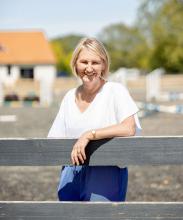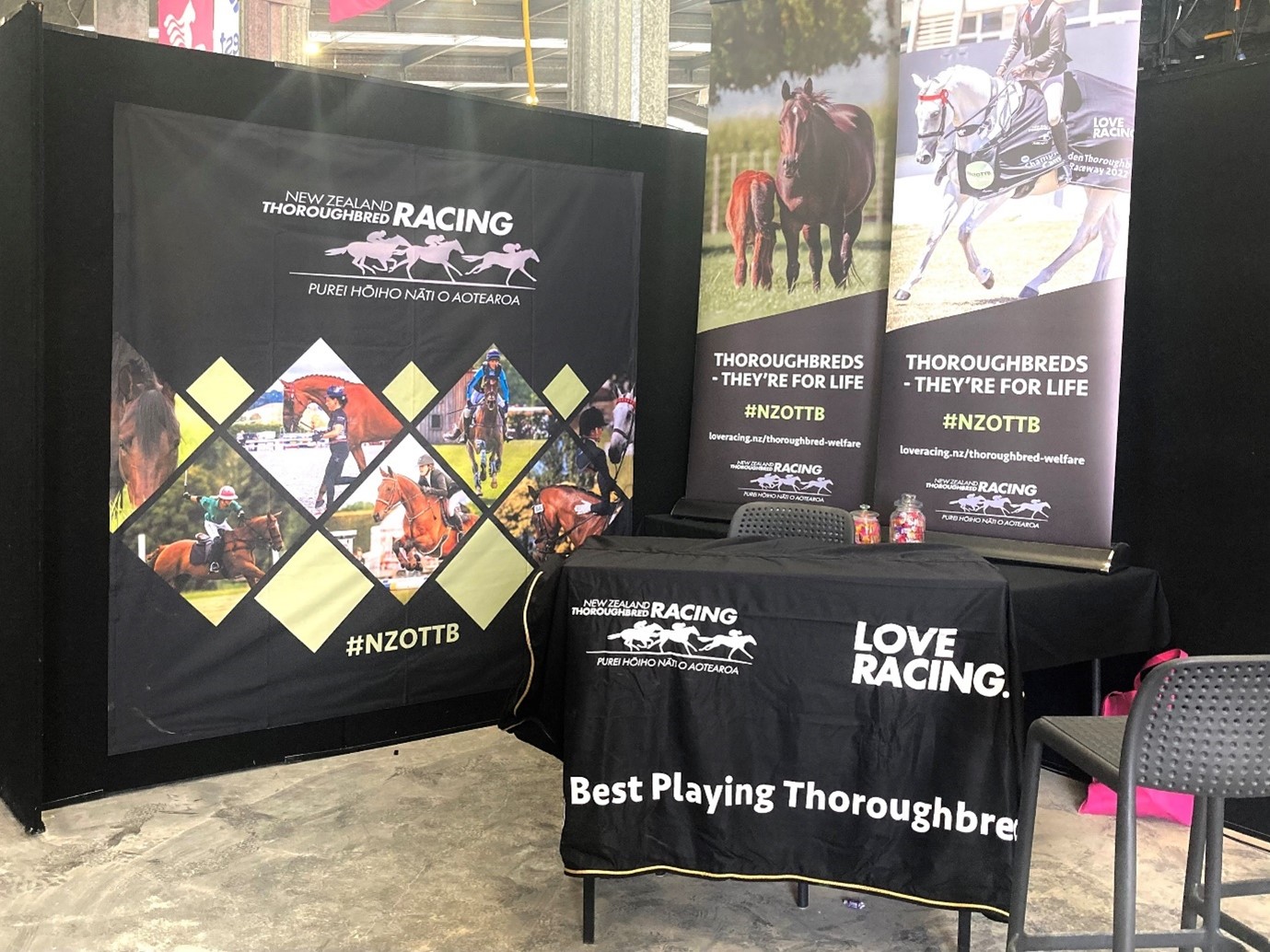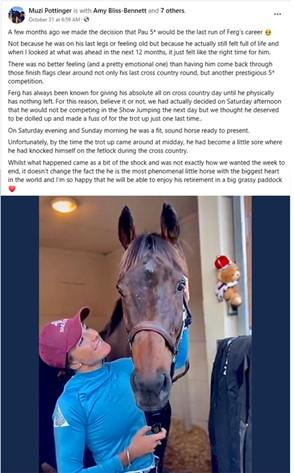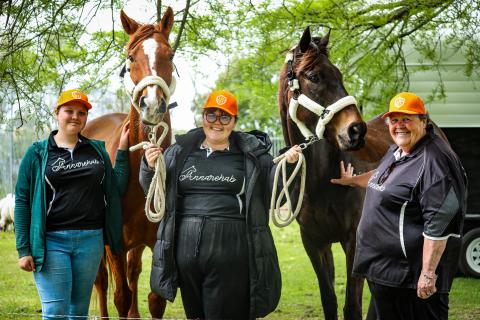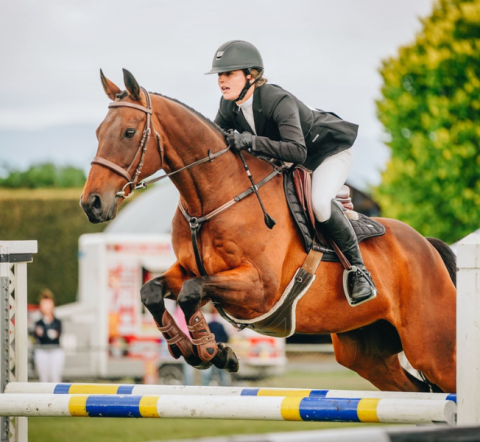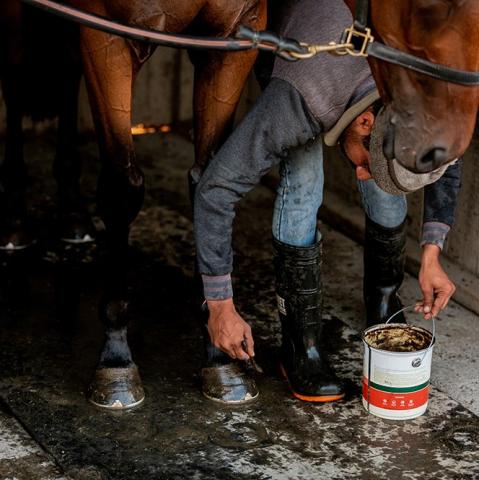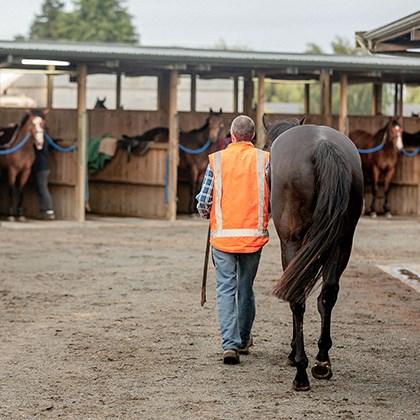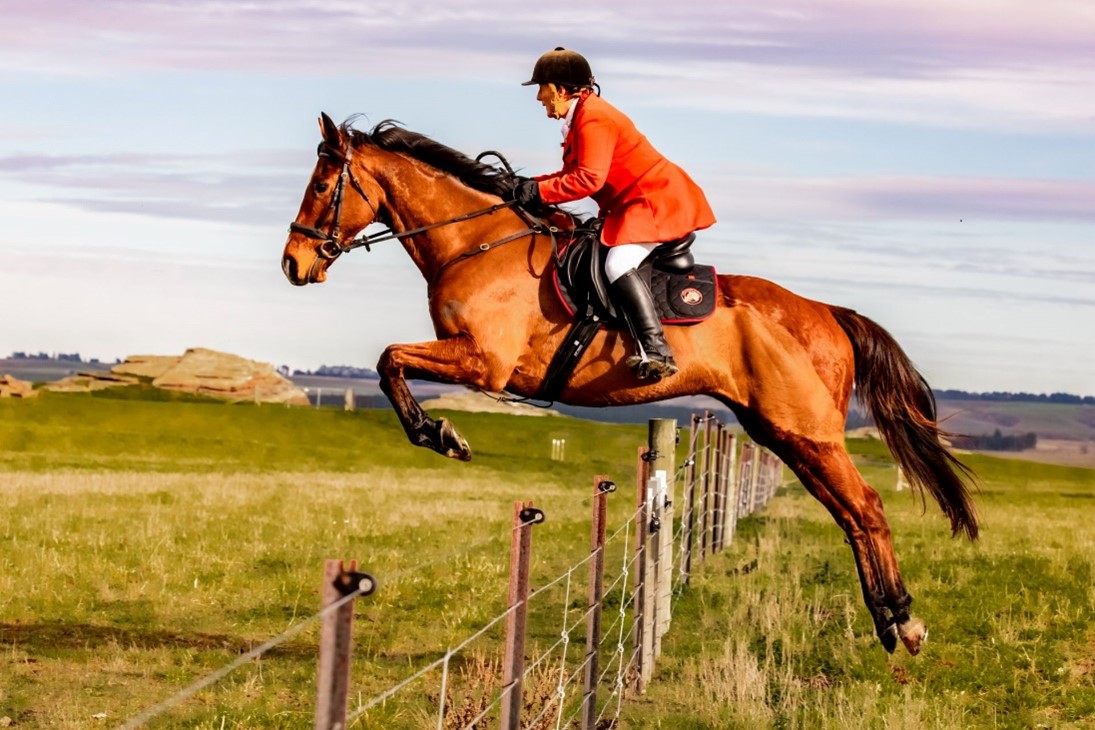I’m pleased to publish the first edition of the Thoroughbred Welfare Advocate, providing an overview of what is happening in New Zealand Thoroughbred Racing's welfare space, as well as sharing information that will bridge the gap between the Thoroughbred, equestrian and polo communities at large.
We will showcase success stories beyond the winning post as Thoroughbreds move into their second careers, as well as improving education around what the Thoroughbred industry can do to ensure horses are set up for success and given every opportunity to thrive during this transition.
One thing I have come to appreciate in my role at NZTR is how much those in the Thoroughbred industry enjoy hearing about the progress and success of horses they have bred, owned or worked with once they have moved on from their racing careers. On the flip side, I have found those in equestrian circles love learning about their horse’s history, their pedigree, and achievements (or lack of) on the track.
It just goes to show how strong the connections are with our horses – it doesn’t matter if they are racing around a track or working in an arena, we all love to see them succeed and flourish in their career as athletes.
For those that aren’t aware, NZTR’s Welfare programmes and projects are funded by the 1% levy on stakes money in New Zealand. The allocation of funds is carefully considered and we are working on developing new initiatives that will help give our Thoroughbreds a happy and purposeful life after racing.
You can find out more about the funding allocation of The 1%, as well as our quarterly updates on our website linked below.
We hope you enjoy the first edition of our Thoroughbred Welfare Advocate. Please feel free to contact NZTR and share your story if you have a Thoroughbred, no matter what part of the industry they are currently participating in. We want to celebrate the versatility of Thoroughbreds, whether they are competing at the top level of a discipline or have found their niche hacking around a farm.
Yours sincerely,
Justine Sclater
Head of Thoroughbred Welfare and Sustainability
M: 021 433 107
E: justine.sclater@nztr.co.nz
OWNERSHIP RESPONSIBILITIES 📖
It is important racehorse Owners have a plan in place to ensure their Thoroughbreds move into their second career in good health and with every opportunity to succeed. This will secure our racing’s social licence and the sustainability of the industry, as well as set up the horses to thrive in the next stage of their life.
For those retiring to the broodmare paddock, the transition is somewhat seamless, those heading to the sport or pleasure horse arena may require further action.
Whether horses are rehomed privately or via one of NZTR’s 13 Acknowledged Retrainers, it is recommended the following should be completed:
- Transport to the new property be paid by the Owner or Accountable Person.
- The horse should arrive in good body condition and be recently shod.
- There should be full disclosure of medical and behavioural history. This will not necessarily negate the horse being taken but it will help place it in an appropriate career later and ensure the safety of riders.
- An SR24 Death or Retirement of a Thoroughbred Form is filled out by the Owner or Accountable Person and lodged with NZTR.
By covering the initial costs of transport, farrier care and disclosing any relevant information, the new Owners can begin their work safely and effectively. If they later trade that horse, they can make a transparent transaction that reflects well on the industry.
It is important the industry places value on a Thoroughbred’s second career, given they can live well into their twenties. Many spend around five years in the racing system, with a horse having around 15 years that should be lived with purpose, quality and dignity.
ACKNOWLEDGED RETRAINER SPOTLIGHT ✨
Acknowledged Retrainers are selected by NZTR based on their skills and experience and have a track record of successfully retraining and rehoming Thoroughbreds for a wide range of equestrian pursuits.
Acknowledged Retrainers are supported by a range of initiatives funded by the 1% welfare levy on stakes money. These include the Leg Up Grant, which is available in the instance where a horse arrives in a condition that does not meet minimum required standards and requires initial investment before it can be brought into work and suitably assessed for rehoming. The Administration Support Grant can be accessed once a horse has been rehomed and all the required steps in the traceability process have been completed. This Grant is paid at a rate of $200 +GST per horse and is the only guaranteed funding Retrainers get for each Thoroughbred that they rehome.
Additionally, all Acknowledged Retrainers associated with NZTR are provided with branded merchandise and are able to utilise the Safety Equipment Grant which can be used towards the cost of gear such as helmets and safety vests. Lastly, administrational support resources and educational opportunities are available to Acknowledged Retrainers.
This month the spotlight is on Acknowledged Retrainer, Tracy Stobie, of Tracey Stobie OTT Thoroughbreds.
Q & A
Location: Kinloch, Taupō
Horses in work: Four
Thoroughbreds retrained during the past 12 months: Eight
Number of staff: Zero
Disciplines: Hunting and Dressage
Explain your process when a Thoroughbred first arrives at your facility? I give them a day or so to settle in a paddock then get them in and check the fit of saddles and bridle etc. I ride them every day for about a week, working out what they can and can’t do. After that, I usually give them a few days off, then back into regular work learning new skills until they leave for their new homes.
What do you love most about Thoroughbreds as a breed? Everything…
How do you make sure a Thoroughbred is going to a suitable home? That’s probably the hardest part of the whole process. The person needs to come and ride the horse so I can see they have the necessary riding ability and also so they know what they’re buying. I like to know what sort of facilities they have for grazing etc. and what they’re planning to do with the horse.
Do you have a favourite Thoroughbred that has come through your retraining programme? I suppose the favourite would have to be the one we kept for ourselves, Lenny. He was bred by Darley in Australia (Helmet x Preserve) and raced as Archives until he was sold to Hong Kong. He then raced as Lean Ambassador.
Do you have a preferred sire line or stable that you source your Thoroughbreds from? I wouldn’t mind a few more by Helmet. I also like getting a call from Isola Racing Stables. Their farm/beach environment is a great start to build on with their horses.
What is one thing you wish people knew about rehoming Thoroughbreds? An appropriately trained Thoroughbred can be suitable for any equine pursuit.
What is the biggest challenge of being a retrainer of Thoroughbreds? Finding people with the money, ability and knowledge to ride and care for a Thoroughbred properly.
How do you think that challenge could be resolved? More promotion of what retired racehorses can and could be doing after racing.
What do you like most about being a NZTR Acknowledged Retrainer? Giving these horses the skills to have a life after racing whether it be as as a sporthorse or happy hacker.
What advice would you give to someone looking at purchasing an off-the-track Thoroughbred? That you understand the financial commitment and upkeep of owning a horse. Please ride the horse before you purchase it. Until you actually sit on it, you don’t know if you can ride it or if you like riding it. Also ask why it’s no longer racing, whether it’s had an injury that may impact your plans for the future.
If you had a million dollars to invest in incentivising ownership of Thoroughbreds as sport horses what would you do? Pay the Authorised Retrainer so they can put more time into producing these horses to a stage where they are suitable for more levels of riders. Also sponsor competitions at all levels and disciplines for Thoroughbreds.
SPONSORSHIP 🐎
There are over 470 Thoroughbreds registered for the Thoroughbreds in Equestrian Sports (TiES) Series in the 2023/24 season, 93 of those were new registrations from August 2023.
There is over $76,000 from the 1% levy on stakes money on offer to eligible competitors across two Series.
The TiES Futurity Series is new for this season and will run alongside the Accumulator Series, it has been developed specifically for horses in their first or second year of the Equestrian Sport New Zealand (ESNZ) registered competition.
With a prize pool worth $34,800, the Futurity Series is restricted to show jumping for its first year with scope to develop.
The Accumulator Series will offer a prize pool of $41,500 to eligible competitors in show jumping, dressage and para-dressage, eventing, show hunter, endurance and competitive trail riding.
There will be an additional bonus in each qualifier and final for the highest-placed horse sourced directly from an NZTR Acknowledged Retrainer. This has been offered to recognise those who have given our Thoroughbreds an opportunity in their second career.
You can learn more about the TiES Series and the upcoming events by clicking the button below.
EVENTS 🎈
The NZTR team was on site at Equifest in Taupō this October promoting the use of Thoroughbreds as sport horses and educational opportunities in the industry. This is always a popular event and this year, the stand had a constant stream of visitors learning about Thoroughbreds in their lives after racing, while picking up some LOVERACING.NZ merchandise and having a ride on the mechanical horse.
LATEST THOROUGHBRED TRIUMPHS 📰
MONICA SPENCER AND MAX
In February 2022, Monica Spencer won the NZTBA Ready Teddy Trophy for the best-performed Thoroughbred at the Matamata Horse Trials with her 4* ride Artist. The pair haven’t slowed down since and now Taupō-based Monica is aiming for Paris 2024 with the Windsor Park Stud-bred ‘Max’.
The pair are growing a following and were fan favourites when finishing seventh at the MARS Maryland CCI5*-L in the USA. You can read more about Monica and Max below.
JUST KIDDING RETIRES
NZTR Traceability Ambassador Amanda 'Muzi' Pottinger has paid tribute to her career-launching Thoroughbred, Just Kidding, who was “never expected” to be a 5* horse, upon the globetrotting superstar’s retirement. Read more below.
ANNAREHAB
Work ethic, intelligence and willingness - any Thoroughbred fan will tell you these are the characteristics that mean Thoroughbreds thrive in their sport horse careers after racing.
They’re also the traits that make them the ideal partners for AnnaRehab’s Equine Assisted Learning programme (EAL).
PARIS 2024 OLYMPICS
Thoroughbred sport horses are to be properly recognised at the 2024 Paris Olympic Games, in a departure from the breed’s earlier status with its representatives being shown as “breeding unknown”.
HEALTH AND RESEARCH 🔍
IFAR WEBINAR
The International Forum for the Aftercare of Racehorses (IFAR) hosted a webinar on the role of behaviour change in equine welfare on 24 October. Led by applied behavioural scientist Dr. Denise Goodwin and moderated by renowned media personality Caroline Searcy, the webinar focused on who needs to do what differently in horse racing and how to achieve those goals.
Denise’s presentation examined why behaviour change is necessary, three common mistakes in changing behaviour, the importance of problem definition and drivers of behaviour. She also reviewed some practical examples of what is happening in the aftercare of racehorses before taking part in a question-and-answer session. You can watch the video on YouTube linked to the right.
HOOF CARE AND MANAGEMENT
Understanding the basics of hoof care and management doesn’t need to be complicated, but getting it right is often key to a happy, healthy and sound horse. With so much information out there, the New Zealand Equine Research Foundation wanted to support the publishing of a booklet backed by veterinary science, so that every horse Owner may be confident in managing their horse’s hooves.
BRAND SEARCH
Did you know you can identify your Thoroughbred and find out more about their history via a brand search? The horse can be identified on the LOVERACING.NZ website by inputting the microchip number in the Horse Profile search box here, or Stud Book search here. If you don’t know their racing name or breeding, you can also download and fill out the 'Request for Identification of a Thoroughbred' (SR22) Form which is free of charge. Once you have completed the Form, send it to NZTR and if the horse is identified, their details will be sent to you.
EMERGENCY GUIDE
Emergencies can happen at any time and when you live on a lifestyle property, you might have to deal with them on your own until outside help arrives. Civil Defence Waikato have put together a handbook that gives you detailed advice on how to prepare for an emergency, what to do and who to reach out to. Now’s the time to create a detailed emergency plan to keep you, your whānau and animals safe.
WALL OF FAME - supported by DUNSTAN HORSEFEEDS ⭐
NZTR has created a Wall of Fame that comprises as many retired (or never raced) Thoroughbreds as we can find, and we want to hear your stories to fill the Wall too. If you wish to share, please contact us with a recent photo and story of your horse at traceability@nztr.co.nz.
Each month, one of the horses featured on our Wall of Fame will be selected to receive a voucher from our sponsor Dunstan Horsefeeds for their Dunstan Old Horse, a high-fibre, complete feed formulated to meet the unique nutritional requirements of the aging horse.
This month we feature Dundee Flag (2013 B. G Raise The Flag x Leeward Prevails).
Dundee Flag (2013 B. G Raise The Flag x Leeward Prevails)
Breeder: Mrs L E Anderton | Record: 12 starts for two placings, $3,000 in stakes
Dundee Flag is now in the very important role as the Hunt Masters horse with Anne Beattie. He didn’t have a great love of being in front, so he quickly became the babysitter for the young racehorses while on the track rather than a competitive racehorse. He retired to Anne Beattie to become a show jumper/hunter. Jayne Beattie show jumped him before selling him to Marg Ridley (wife of Trainer Neil) to get Marg back into show jumping. Marg then sold Dundee Flag back to the Beattie’s where he hunted in the field with a range of young riders. He is now a Master’s horse for Otago and is living his best life, though he prefers to have the Huntsman and whips in front of him still!
Thank you for reading issue #1 of NZTR's Thoroughbred Welfare Advocate, we hope you enjoyed the content and are looking forward to our updates moving forward.
The NZTR Welfare Team.




